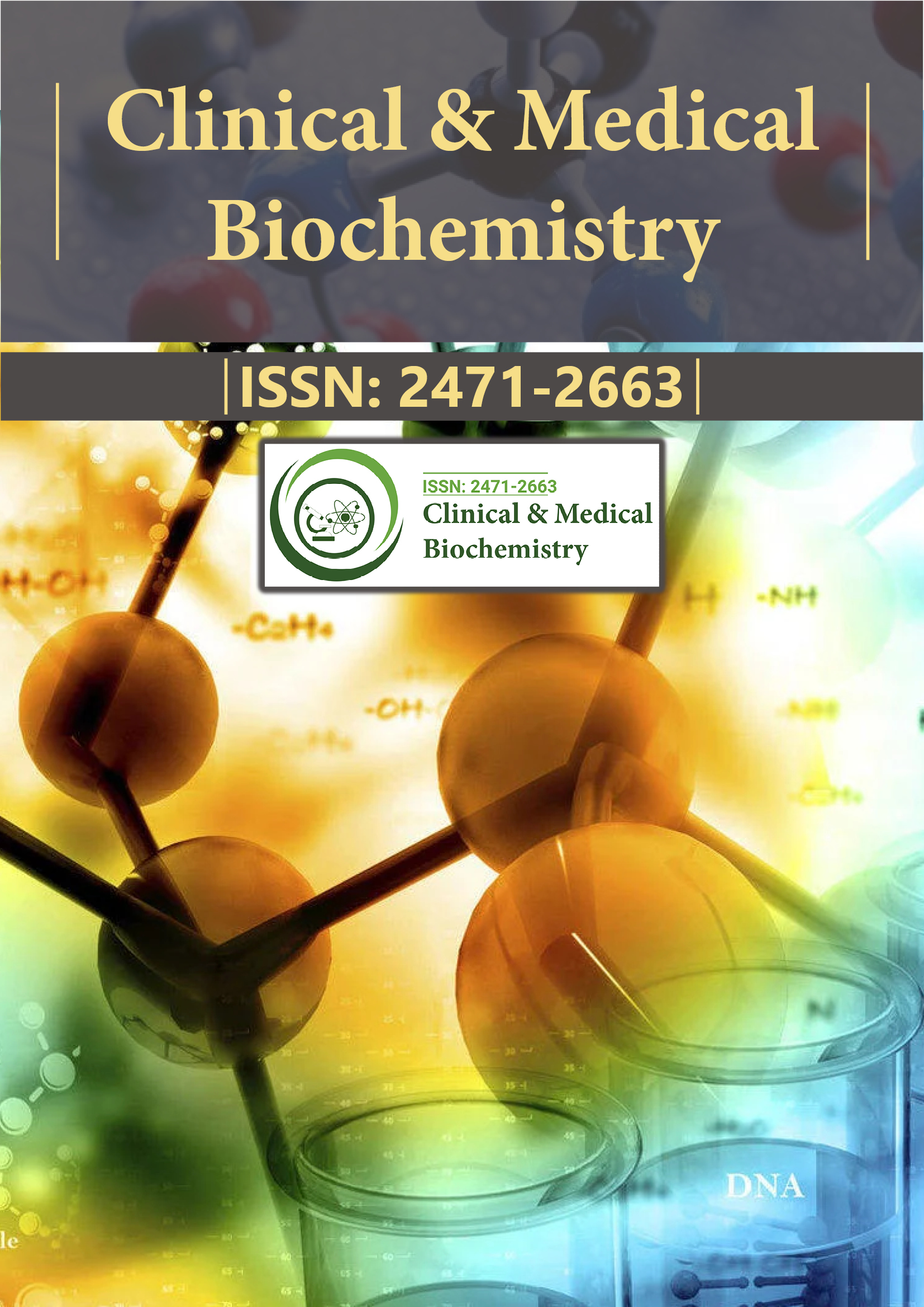Indexed In
- RefSeek
- Directory of Research Journal Indexing (DRJI)
- Hamdard University
- EBSCO A-Z
- OCLC- WorldCat
- Scholarsteer
- Publons
- Euro Pub
- Google Scholar
Useful Links
Share This Page
Journal Flyer

Open Access Journals
- Agri and Aquaculture
- Biochemistry
- Bioinformatics & Systems Biology
- Business & Management
- Chemistry
- Clinical Sciences
- Engineering
- Food & Nutrition
- General Science
- Genetics & Molecular Biology
- Immunology & Microbiology
- Medical Sciences
- Neuroscience & Psychology
- Nursing & Health Care
- Pharmaceutical Sciences
Opinion Article - (2024) Volume 10, Issue 4
Cellular and Molecular Insights into the Biochemical Effects of Pharmacological Treatments
James Cornell*Received: 25-Nov-2024, Manuscript No. CMBO-24-28347; Editor assigned: 27-Nov-2024, Pre QC No. CMBO-24-28347 (PQ); Reviewed: 12-Dec-2024, QC No. CMBO-24-28347; Revised: 20-Dec-2024, Manuscript No. CMBO-24-28347 (R); Published: 27-Dec-2024, DOI: 10.35841/2471-2663.24.10.234
Description
Pharmacological treatments, designed to modify disease processes and alleviate symptoms, often exert significant biochemical effects on the body. These effects can be wideranging and vary depending on the type of drug, its mechanism of action and the target tissues or organs. Understanding the biochemical effects of pharmacological treatments is important for optimizing therapeutic strategies and minimizing potential side effects.
One of the most common biochemical effects of pharmacological treatments is their interaction with specific receptors or enzymes, which can either enhance or inhibit certain biological processes. For example, many drugs exert their effects by binding to receptors on the surface of cells, altering the signaling pathways inside the cell. For example, beta-blockers, used in the treatment of hypertension and heart failure, bind to beta-adrenergic receptors, blocking the action of adrenaline and noradrenaline. This reduces heart rate and blood pressure by decreasing the activation of the sympathetic nervous system. The biochemical effect of this interaction results in a decrease in cardiac output, which helps alleviate the symptoms of heart failure and lower blood pressure in hypertensive patients.
Similarly, drugs like Angiotensin-Converting Enzyme (ACE) inhibitors, such as enalapril, work by inhibiting the ACE enzyme, which converts angiotensin I to angiotensin II. Angiotensin II constricts blood vessels, raising blood pressure. By blocking this conversion, ACE inhibitors lead to vasodilation, which reduces blood pressure and lessens the workload on the heart, particularly in patients with heart failure or chronic kidney disease.
Pharmacological treatments can also influence enzyme activity, either by acting as enzyme inhibitors or activators. A well-known example is the use of statins in the treatment of hypercholesterolemia. Statins inhibit HMG-CoA reductase, the enzyme responsible for the rate-limiting step in cholesterol biosynthesis. By blocking this enzyme, statins lower the production of cholesterol in the liver, leading to reduced levels of low-density lipoprotein cholesterol in the bloodstream. The biochemical consequence of this action is a reduction in the risk of atherosclerosis and cardiovascular events.
Another significant biochemical effect of pharmacological treatments involves their impact on ion channels and transporters. For example, calcium channel blockers, such as verapamil and amlodipine, inhibit the influx of calcium ions into muscle cells of the heart and blood vessels. This reduces vascular tone and decreases heart rate and blood pressure. The biochemical consequence of this action is a relaxation of smooth muscle cells, resulting in vasodilation, which helps manage conditions like hypertension and angina.
In the case of diuretics, commonly used to treat conditions such as hypertension, heart failure and edema, the biochemical effect involves the inhibition of sodium and water reabsorption in the kidneys. Diuretics, such as furosemide and hydrochlorothiazide, act on different segments of the nephron to promote the excretion of sodium, chloride and water. This reduces blood volume, leading to lower blood pressure and reduced fluid accumulation in tissues. However, prolonged use of diuretics can alter electrolyte balance, leading to potential side effects such as hypokalemia (low potassium levels) or hyponatremia (low sodium levels).
In conclusion, pharmacological treatments exert diverse biochemical effects by interacting with specific cellular components, enzymes, receptors and ion channels. These interactions lead to changes in cellular signaling, enzyme activity, gene expression and metabolism, which ultimately result in therapeutic benefits. However, these treatments must be carefully managed to minimize adverse biochemical effects. A deeper understanding of the biochemical effects of pharmacological agents is essential for developing more effective and safer treatments for a wide range of diseases.
Citation: Cornell J (2024). Cellular and Molecular Insights into the Biochemical Effects of Pharmacological Treatments. Clin Med Bio Chem.10:234.
Copyright: © 2024 Cornell J. This is an open-access article distributed under the terms of the Creative Commons Attribution License, which permits unrestricted use, distribution, and reproduction in any medium, provided the original author and source are credited.

